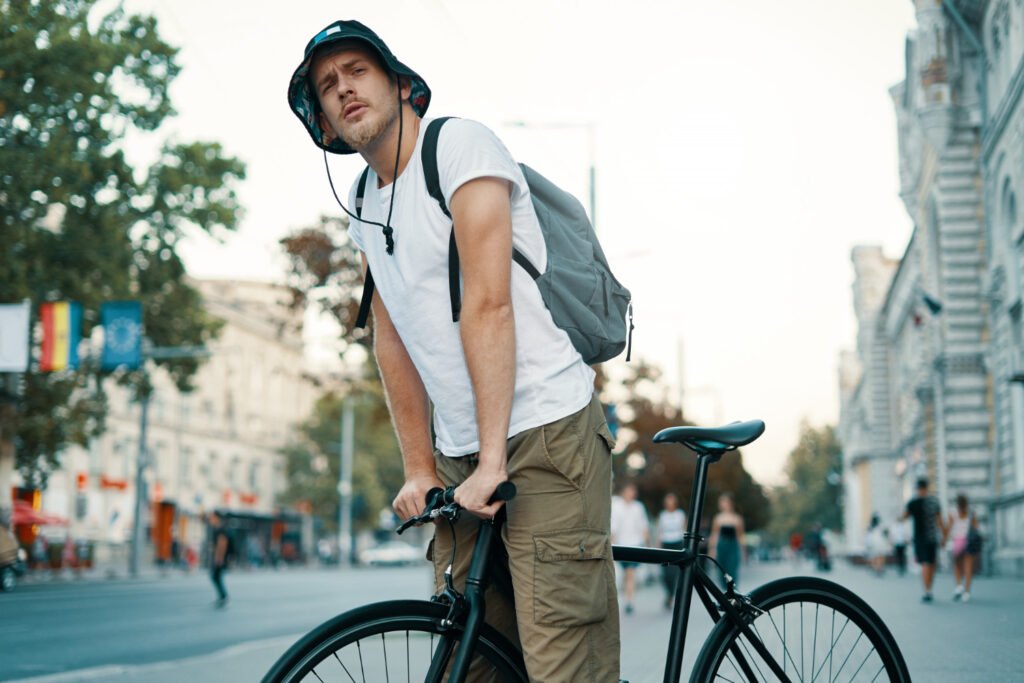The Best Fluffy Pancakes recipe you will fall in love with. Full of tips and tricks to help you make the best pancakes.
Commuter Cycling for Beginners: What to Know
A beginner-friendly guide for new urban cyclists.

Starting commuter cycling may feel intimidating at first, but with the right bike, essential gear, and a safe route plan, it quickly becomes one of the most rewarding daily habits. From choosing a hybrid or folding bike to following road etiquette, commuter cycling beginners can create a safe, comfortable, and enjoyable routine that saves time, money, and stress.
This guide covers everything a new commuter cyclist needs to know—including equipment, clothing, safety, and habit-building strategies. For a deeper dive into the health and financial perks of cycling, visit our Bike Commuting Benefits.
Choosing the Right Bike for Your Commute
Selecting the perfect bike makes commuter cycling comfortable and enjoyable for daily use. Different bike types serve specific commuting needs and riding conditions. Your choice depends on commute distance, terrain, and storage requirements at work.
| Bike Type | Best For | Key Features |
| Hybrid Bikes | City streets, moderate distances | Balance of comfort and speed |
| Commuter/Urban Bikes | Daily riders, cargo needs | Built-in racks and fenders |
| Folding Bikes | Mixed transport commutes | Compact storage, public transport friendly |
| E-bikes | Long commutes, hills | Electric assistance, reduced effort |
Key selection factors:
- Commute distance and terrain type
- Storage space at home and work
- Budget for initial bike investment
- Integration with public transportation needs
Visit local bike shops for test rides to find your ideal commuter cycling setup.
Essential Gear and Accessories for Safe Cycling
Proper gear ensures safety and convenience during your daily commuter cycling routine. Quality accessories protect you while making rides more comfortable and practical. Invest in basics first, then add convenience items as needed.
Safety essentials (required):
- Helmet – protects your head during falls
- Front white light – illuminates path ahead
- Rear red light – makes you visible to drivers
- Strong U-lock or chain lock – prevents theft
Convenience accessories (recommended):
- Fenders – keep clothes clean and dry
- Rear rack – carries bags without back strain
- Water bottle holder – stay hydrated during rides
- Phone mount – navigation and emergency access
Maintenance basics:
- Basic tool kit for minor adjustments
- Spare tube and tire levers for flats
Smart gear choices transform commuter cycling from challenging to enjoyable daily transportation.
Clothing and Comfort Tips for Daily Rides
Comfortable clothing makes commuter cycling practical without requiring specialized cycling outfits. Normal work clothes work perfectly for short commutes with minor adjustments. Choose breathable fabrics and avoid loose clothing that catches in bike chains.
Clothing recommendations:
- Fitted pants – avoid loose fabric near chain
- Breathable shirts – cotton or moisture-wicking materials
- Comfortable closed-toe shoes – sneakers work great
- Light jacket for temperature changes
Weather protection essentials:
- Lightweight waterproof jacket for rain
- Shoe covers to keep feet dry
- Thin gloves for cold morning rides
- Sunglasses for bright sunny days
Comfort upgrades:
- Padded bike shorts under work clothes
- Gel saddle cover for additional cushioning
- Handlebar grips for better hand comfort
Pack extra clothes at work for unexpected weather changes during commuter cycling adventures.
Safety Rules and Road Cycling Etiquette
Following traffic rules keeps commuter cycling safe and builds positive relationships with drivers. Proper road behavior protects cyclists while ensuring smooth traffic flow for everyone. Learn local cycling laws before starting your commuting routine.
Essential safety rules:
- Always ride WITH traffic direction, never against
- Use clear hand signals when turning left or right
- Stop completely at red lights and stop signs
- Yield right-of-way to pedestrians at crosswalks
Visibility and positioning:
- Stay visible at intersections – avoid driver blind spots
- Position yourself clearly in bike lanes or roadway
- Make eye contact with drivers when possible
- Use lights and reflective gear during dawn/dusk
Local law compliance:
- Research helmet requirements in your city
- Understand bike lane usage rules and restrictions
- Know nighttime lighting requirements and penalties
- Learn parking regulations for bikes at destinations
Communication with drivers:
- Use predictable movements and clear signals
- Acknowledge courteous driver behavior with waves
- Stay calm during conflicts or close calls
Respectful commuter cycling builds community support for better bike infrastructure development.
Planning Your Commuter Cycling Route
Strategic route planning makes commuter cycling safer, faster, and more enjoyable than random navigation. Research multiple route options before your first ride to work. Google Maps bike mode shows dedicated bike lanes and quieter streets.
Route research steps:
- Use Google Maps cycling directions for initial planning
- Identify dedicated bike lanes and protected cycling paths
- Locate quiet residential streets with less traffic
- Find parks or greenways for peaceful riding sections
Route selection priorities:
- Bike lanes and protected cycling infrastructure first
- Quiet neighborhood streets over busy main roads
- Well-lit areas for early morning or evening rides
- Minimal steep hills unless you enjoy climbing
Test ride recommendations:
- Practice your route on weekend mornings first
- Time different route options during rush hour
- Note potential hazards like construction or bad pavement
- Identify backup routes for road closures or weather
Route optimization tips:
- Save successful routes in Google Maps for quick access
- Share good routes with other commuter cycling beginners
- Adjust seasonal routes based on daylight and weather
Smart planning transforms commuter cycling from stressful to streamlined daily transportation.
Building Your Commuter Cycling Habit Successfully
Developing a sustainable commuter cycling routine requires gradual progression and smart preparation habits. Start slowly to build confidence and physical endurance without overwhelming yourself. Consistent preparation makes daily cycling smooth and stress-free.
Habit building strategy:
- Begin with 1-2 cycling days per week initially
- Increase frequency gradually as comfort and fitness improve
- Set realistic goals based on weather and energy
- Celebrate small wins like completing your first week
Daily preparation checklist:
- Charge bike lights every evening after work
- Check weather forecast and prepare appropriate clothing
- Pack work bag with change of clothes if needed
- Set bike gear near door for easy morning departure
Backup planning essentials:
- Know public transport schedules for bad weather days
- Keep emergency cash or transit cards for alternatives
- Identify rideshare pickup locations near your cycling route
- Maintain flexible work arrival times during learning period
Progress tracking motivation:
- Note daily commute times and distances covered
- Record money saved compared to driving costs
- Track fitness improvements like easier hill climbing
- Share achievements with supportive friends and family
Long-term success factors:
- Connect with local commuter cycling communities for support
- Schedule regular bike maintenance to prevent mechanical issues
Patience and preparation transform commuter cycling from intimidating challenge to rewarding daily routine.
Cycling vs Driving Calculator
Compare the real costs and benefits of cycling versus driving





